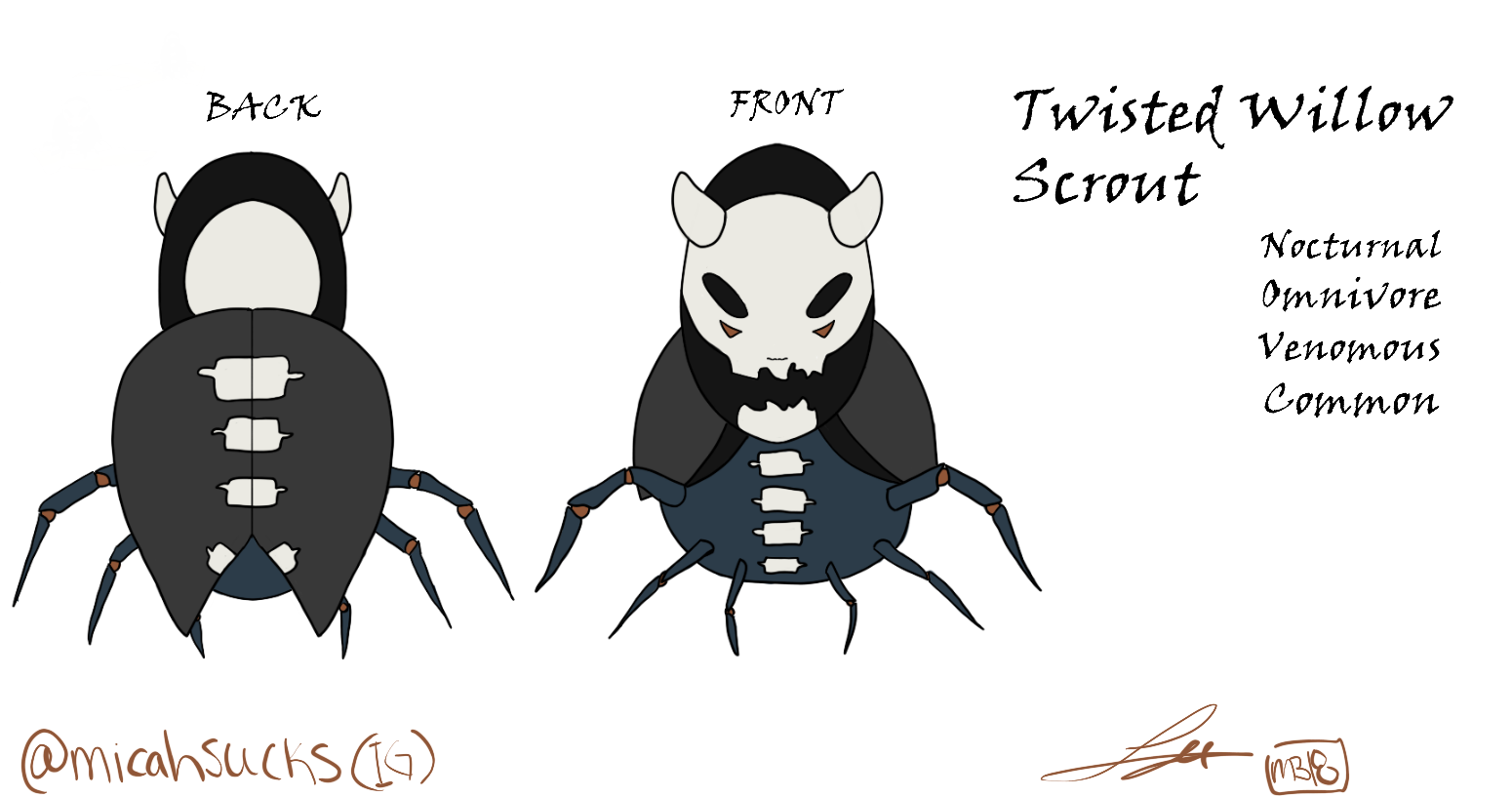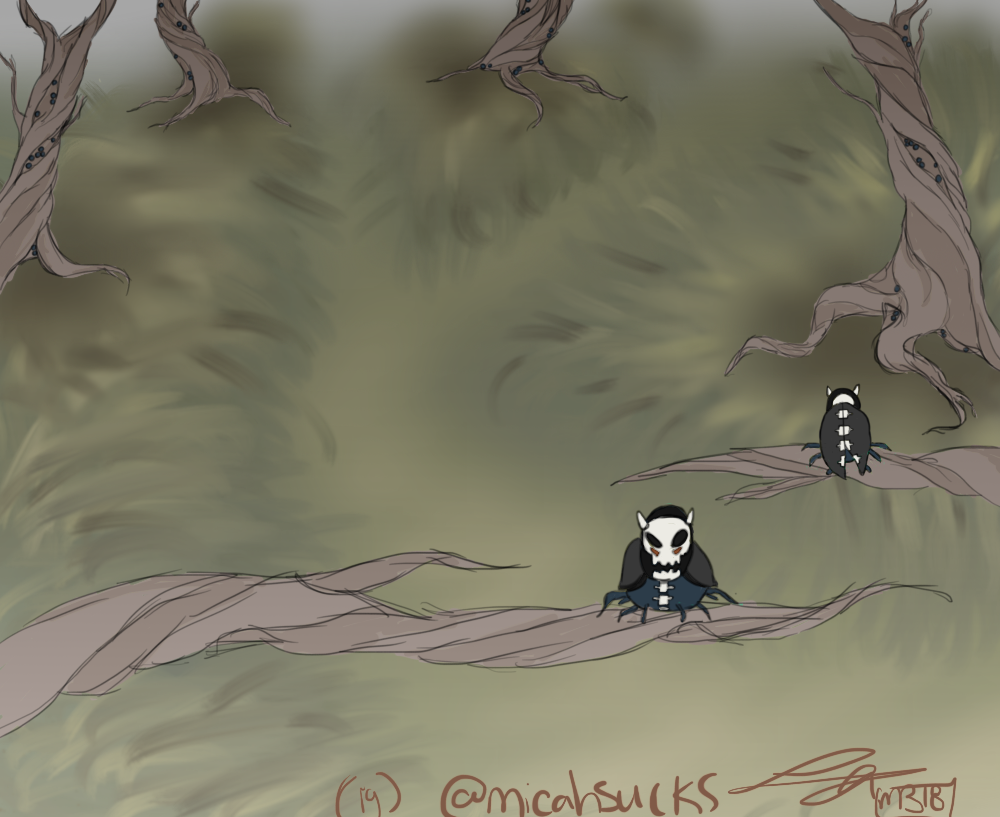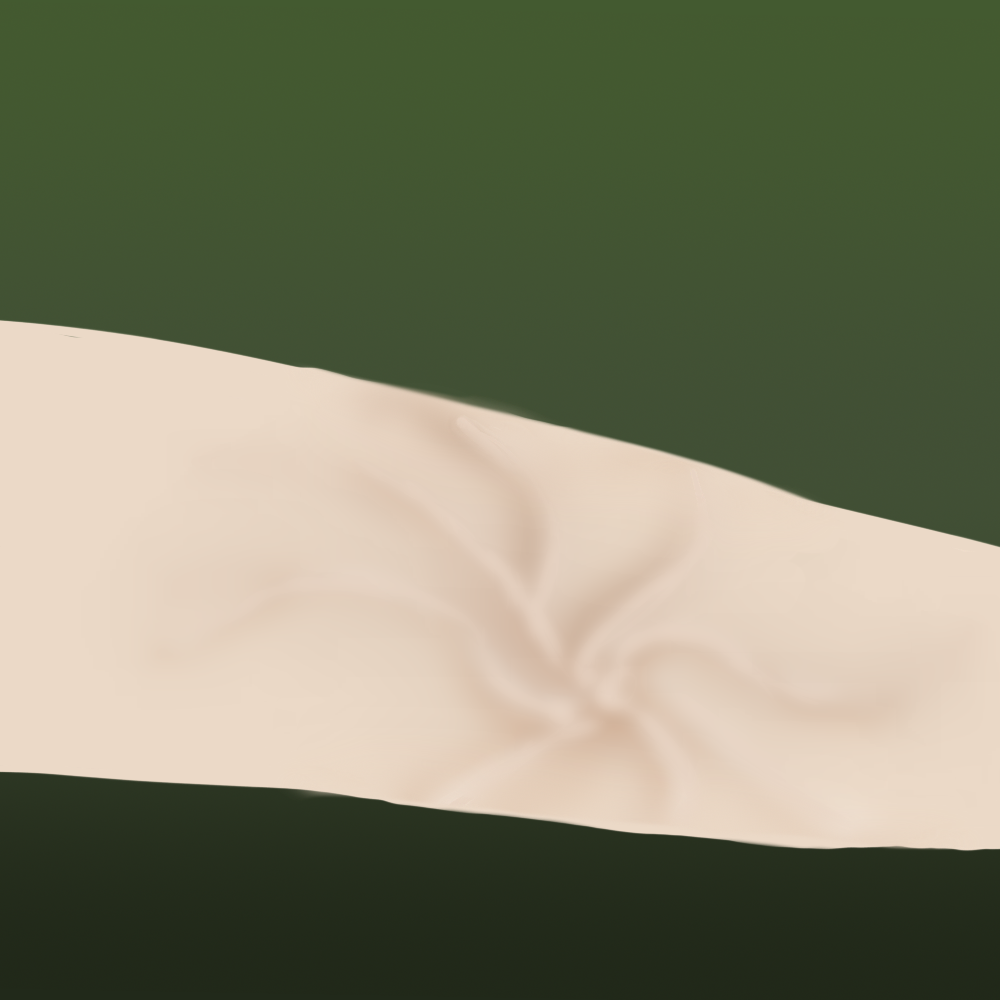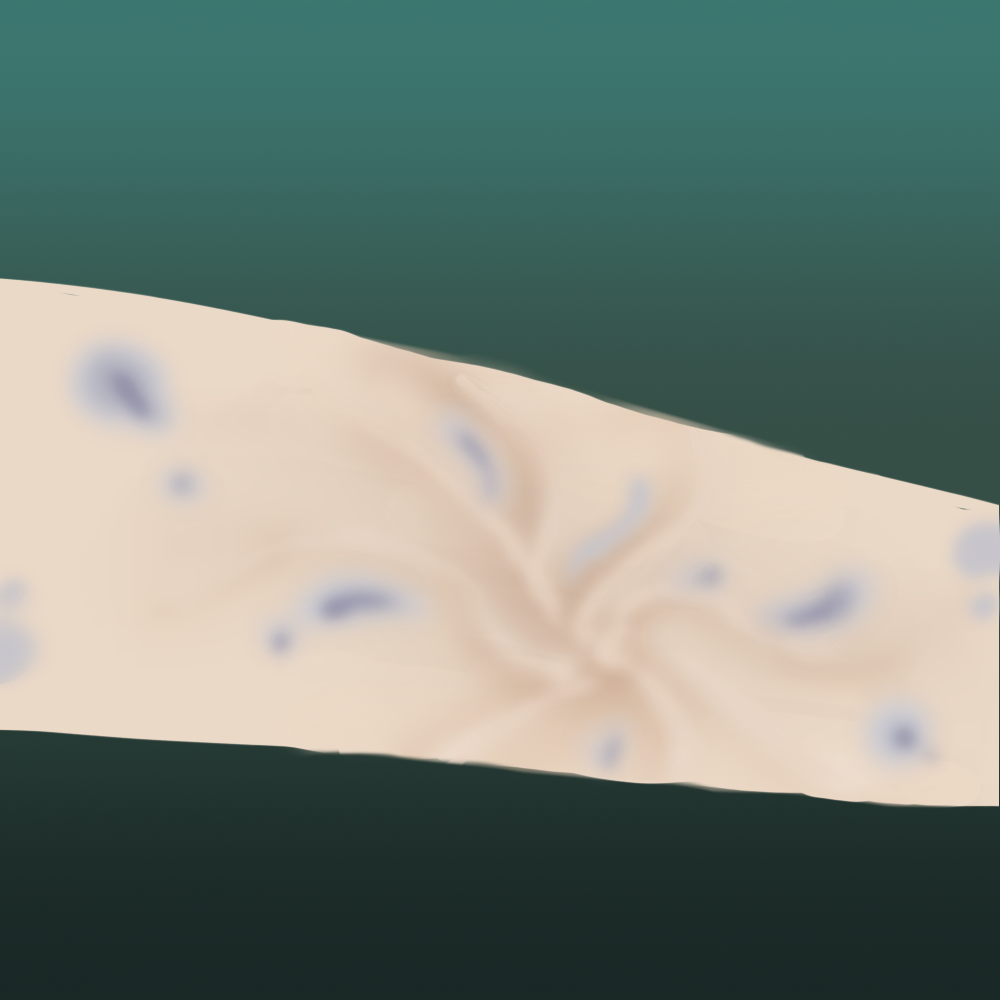Twisted Willow Scrout
Twisted Willow Scrout, commonly called 'Scrout', are avoided by anyone not after the bounty, as they have a pretty nasty bite. Scrout are considered vermin, similar to flies; only worse. If you were to walk into a Twisted Willow forest, you would know immediately if the Scrout were around. Right as it begins to get dark, the Scrout will begin to 'sing'; clanging their legs together and onto the trees, a cacophony of what sounds like bones rattling together will erupt through the woods.
Basic Information
Anatomy
Genetics and Reproduction
Eggs are laid in the crevices of Twisted Willows, and left for 3-4 months until they hatch. Only 65% of eggs survive to hatch. Scrout come to sexual maturity at 2 1/2 weeks.
Growth Rate & Stages
Scrout grow very quickly, coming to near full maturity at just 2 weeks. At 4 weeks, they shed their 4 under wings, and grow new ones. They begin to become weak and die at around 16 weeks.
Ecology and Habitats
Dietary Needs and Habits
Scrout will eat just about anything that moves, from insects to minnows and tadpoles. They will store non-perishables in the Willows, and eat it throughout the scarce times. Scrout will bite when threatened. Scrout are venomous, and their bites contort the flesh around the bitten area. In rare cases, purple 'bruises' form around the bite. This, called 'The Scrout', or 'Scrout Twist', can last anywhere from 2 to 14 days.
Biological Cycle
Scrout will hibernate once it begins to get cold, boring their selves into the soft dirt just below the Twisted Willows.
Additional Information
Domestication
Sometimes kept as pets for small children, in glass bottles.
Uses, Products & Exploitation
Scrout are useless for anything but bounty rewards, as they are poisonous and venomous.
Facial characteristics
"Skull" markings on face, "vertebrae" marking on stomach and back.
Geographic Origin and Distribution
85% of the population reside in Ardum, in the Twisted Willow forests. The rest are spread out wherever they can find trees to their liking.
Perception and Sensory Capabilities
Limited sight range, elevated hearing. Vibrations are felt through the 4 frontal legs, and can sense atmospheric changes through receptors on their exoskeletal wings.
Scientific Name
Scriten Wis
Origin/Ancestry
Willow Bugs
Lifespan
16 weeks
Conservation Status
The species is overpopulating the forests, and have a small bounty for every 50 dead Scrout you bring in.
Average Length
2''
Body Tint, Colouring and Marking
Dark blue body and legs, with grey exoskeletal wings. Cream markings on face, stomach, and back.
Remove these ads. Join the Worldbuilders Guild













Comments